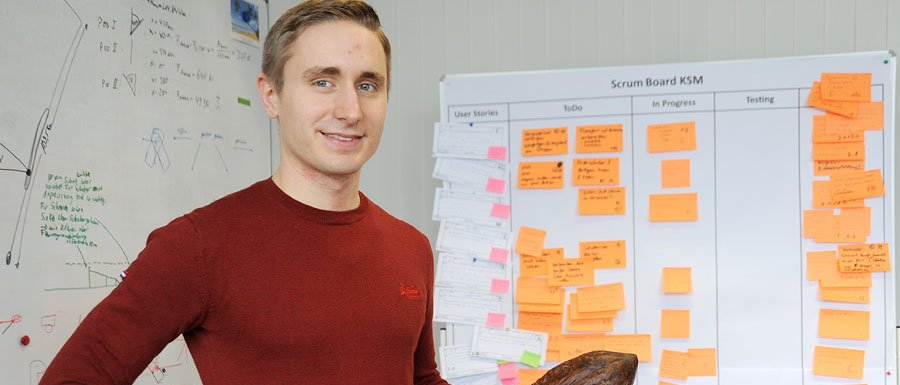Product development for Cameroon:
A cocoa pod peeling machine from Garching

TUMstudinews: Where did the idea of developing a cocoa pod splitting machine come from?
Gilles Heymes: In 2009/2010, a first prototype was developed at the Chair of Product Development. Based on the project work, several student working groups have been refining the machine since the summer semester of 2016. Our focus is on developing a close-to-series-production prototype and on the economic efficiency of putting the machine to use in Cameroon.
Work is still underway, right?
Yes, exactly, the project is currently in the second development phase. Three students are working on the topic as part of their Bachelor's, Semester and Master's thesis, plus two research associates. The current goal is to identify potential for improvement and to optimize the existing prototype.
What potential for improvement is there?
The main challenge is that the cocoa pods differ in size. In the end, the machine should be able to open pods of all sizes. We are trying to achieve this with elastic bands.
Why is the machine needed?
The small farmers usually open the pods with a machete. There is a high risk of injury – and the cocoa beans can be damaged as well. Opening the pods with the machete is also very strenuous. The machine is supposed to ensure ergonomic and injury-free working conditions.
How does the machine work?
The pods fall into the machine via a separator and are then pressed through the core unit by means of a lever that is actuated by hand. Then, the pod is opened and the beans are separated from the shell.
Does this mean that the machine can only be operated by hand?
Yes, exactly! The small farmers in Cameroon must be able to purchase, assemble, and operate the machines themselves – so they should not be technically complex.
Which of the machine’s features were developed by students?
All of them. The basic requirements were defined by the Deutsche Gesellschaft für Internationale Zusammenarbeit (GIZ), but we developed the prototype and added the filling unit, the ejection mechanism, and the drive to the machine.
Is the machine only to be used in Cameroon?
For the time being, it is only for Cameroon. However, I am sure that it could later be used on cocoa plantations all around the world.
Have you ever been to Africa?
Yes, but only in South Africa. In the coming months, however, we will be flying to Cameroon to test the machine on site.
Why did you focus on that subject for your Bachelor’s thesis? Did you have a specific personal motivation or a relationship to Africa?
I was simply interested in the topic, and I wanted to do something constructive instead of just writing a theoretical Bachelor’s thesis. In addition, I found it exciting to work in an interdisciplinary team.
What are your plans for after graduating?
I definitely want to stay in the sector of mechanical engineering, but I’m not yet sure where exactly.
(Interview: Verena Pongratz)
- Gilles Heymes is 23 years old and was born in Luxembourg. He completed his Bachelor’s degree in Engineering Sciences at TUM. Now, he is in his first Master’s semester of Mechanical Engineering and supervises the development of the cocoa pod splitting machine as a graduate assistant.